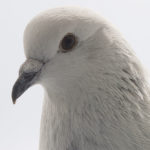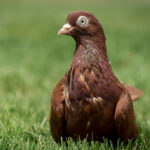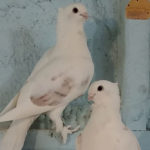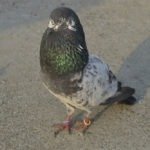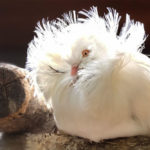These frilly-looking pigeons live up to their names with their curly feathered coats. They are exceptionally unique-looking birds and are a type of fancy pigeon. Read on to find out more about these adorable ’80s looking birds!
Origin
Along with most fancy pigeon breeds, the Frillback was originally bred from mutations of the wild Rock pigeon. Frillbacks have been selectively bred for hundreds of years, though there is no particular known origin of when they were first bred.
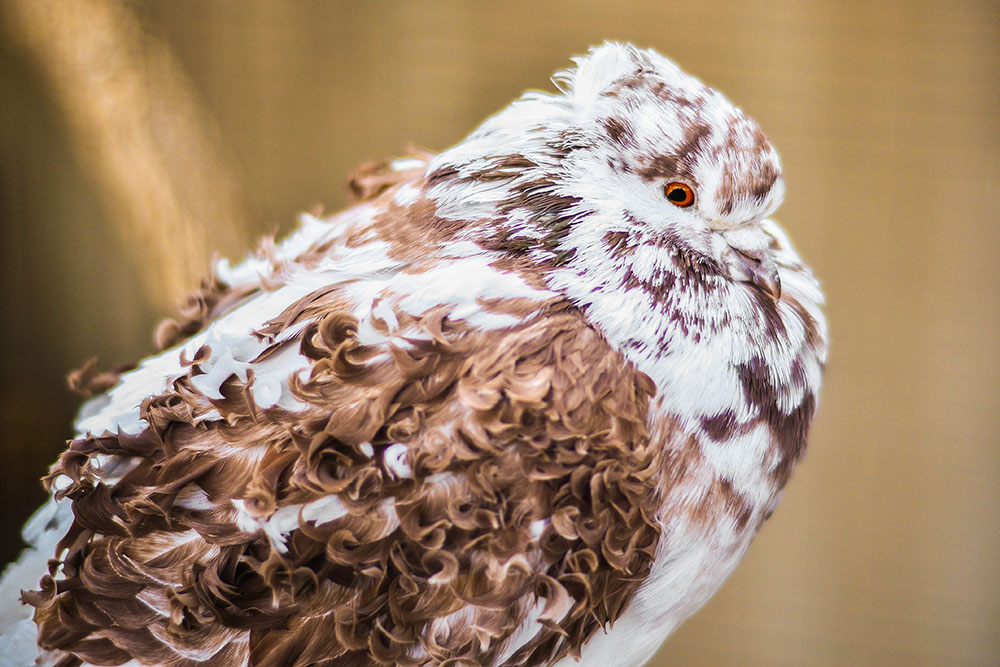
They look very far removed from their wild roaming origins in Rock pigeon and their unique coat has been selectively bred to have a huge range of colors and textures.
They are thought to have originated in Asia, namely Turkey, Greece, Iran, Armenia, and neighboring countries over the whole of Asia Minor. They are also said to be amongst the many breeds of birds kept by Charles Darwin.
Their unique and dazzling feather texture makes them an interesting-looking pet or companion bird but they are usually bred as show birds.
In the US, there are strict standards as to what constitutes a Frillback pigeon and they are a popular choice amongst bird owners for their huge variety of colors and textures.
Appearance
Living up to their names, they have a frilly-looking coat that almost looks like perfectly permed curls. Their curly coats can come in a huge range of colors, some rarer than others. For US breeding shows, they are divided into six categories of feather color- listed below-
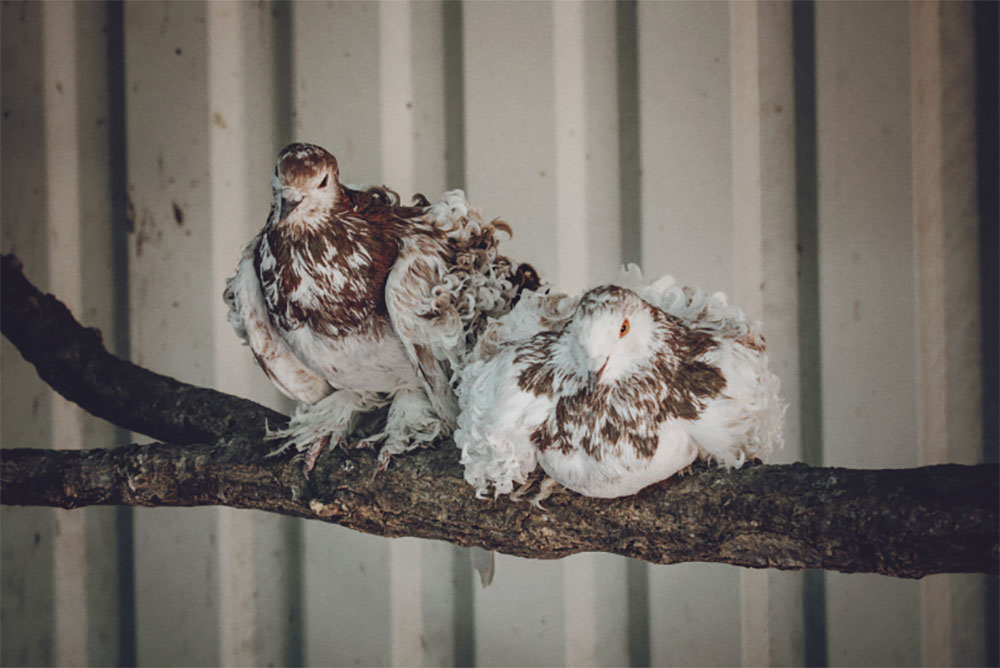
- Self – this is the most common and consists of white/beige, dark blue-black, red and yellow
- Patterned– this is usually a mottled effect coming in a range of colors including red, yellow, beige, and white.
- Grizzle – red, yellow, blue, silver
- Shield marked – this refers to the markings on the crest of the bird and comes in a range of colors- red, yellow, blue to black bar, silver to dun bar, mealy ash to red bar, ashy to cream
There are also two additional categories for rare colors and unique markings which are always sought after by breeders and bird shows. Frillbacks are slightly larger than standard breeds of pigeon, and also have added bulk due to their fluffy-looking feathers.
The ‘frills’ are only on the backs of their wings, hence their name. They have long tails and a long beak, which varies in color.
Along with its classic curls, the frillback also has a distinctive fanned-out tail. White coated birds are less common, though possible to breed- they are unpredictable however as two white Frillbacks will rarely produce white offspring.
Frillbacks have eyes in line with their beak- usually their eyes are red to amber color but this differs with breeding and genes as shield marked Frillbacks will usually have black eyes.
They can also have grey or pearlescent eyes but this is quite rare. Their beaks are long, often with their upper beak protruding slightly more than their lower beak. Again, the color depends on the particular feather markings.
Uses
Frillbacks are mainly bred as decorative pets or for shows. They are good flyers and their pretty bushels of curls require no grooming or maintenance other than a healthy diet and plenty of room for maximum health, making them ideal for show birds as they require little effort.
Can A Frillback Pigeon Fly?
Yes, they can! As long as your bird is healthy and well, they should be flying with no problem. However, even though they are completely capable of flying, they tend to prefer to hop around so it’s a good idea to give your bird a decent amount of ground space so they can walk about freely.
How Do You Breed Frillback Pigeons?
There are 3 main genes involved in the breeding of frillbacks, the most common in this variety of curly-haired birds are called the Cu1 and Cu2 gene. These genes cause the feathers to grow unevenly which gives them their trademark curling.
As mentioned earlier, having two white-feathered Frillbacks will not automatically assume you will get a white offspring-this is quite rare.
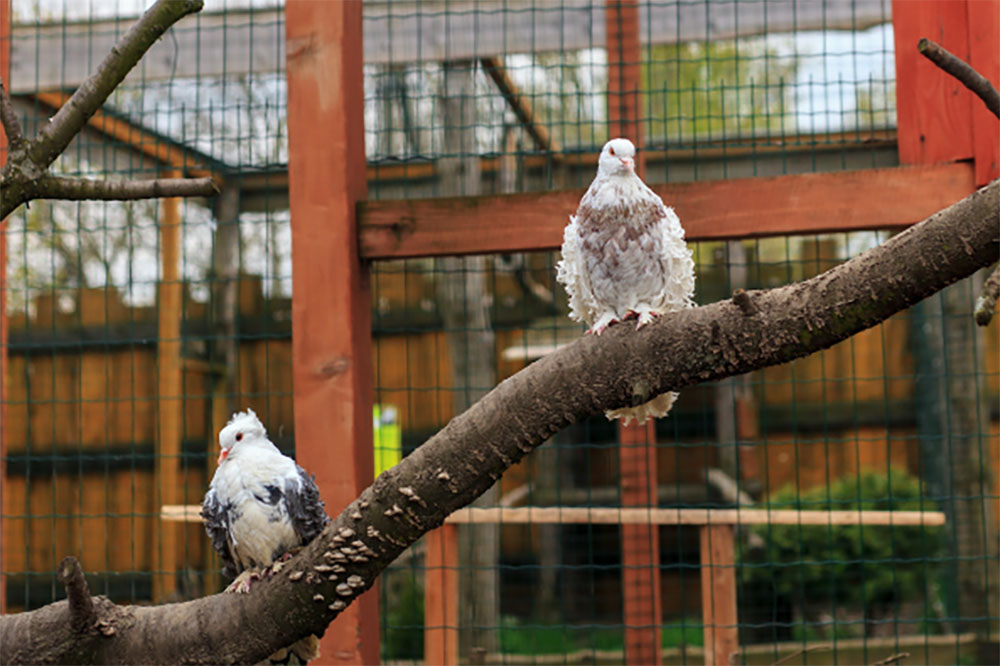
This is because the white gene is a mix of ash red and two parts grizzle with spread factor. So oftentimes, the offspring will take on these other traits and you’ll have a more common ashy brown-looking bird.
Conversely, you can have two more common ash red Frillbacks that produce a snow-white bird. There is an element of luck at play and you can never be a hundred percent certain of what you’ll get.
Frillback birds tend to mate when the days get longer so it is recommended to steer clear of artificial lights and rely more on natural light for your breeding pairs.
As with most other fancy pigeons, limit your bird’s clutches to three per year. If you are having trouble getting your birds to breed, try separating the males and females for a few months before trying again.
How Do I Look After A Frillback Pigeon?
Frillbacks are a relatively healthy breed of bird, they don’t have any rare mutations or bred health conditions. The healthier your bird is, the more likely they will be to have a thick lush-looking coat of frilly feathers- so give them room to move about, limit their stresses, and give them a healthy, nutrient-dense diet.
If you are showing your birds, be aware of cleaning their tail feathers as they like to walk around rather than fly, which gets them dirty especially lighter-colored varieties.
If you have a dark-colored pigeon, be sure you don’t keep in bright lights for a long period, as they can heat up quickly and become uncomfortable. A nice open space with optional shade is best.
Do Frillback Pigeons Make Good Pets?
Frillbacks are not particularly skittish birds and quite social so as long as you acclimate them to people and yourself very early, they make lovely and friendly pet birds.
However, they can be prone to stress if they are not socialized and used to humans or shows from an early age- this can lead to feather loss, general ill-health, and panicking.
It’s a good idea to give your pigeon a slow introduction to show cages and other people to prevent them from panicking if you are hoping to use your birds in competitions.

